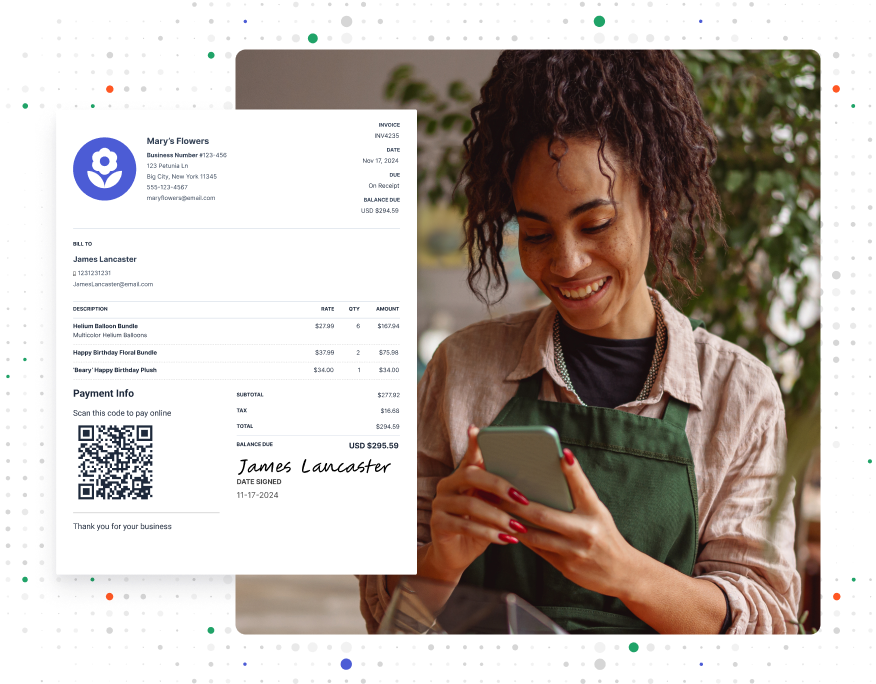What Is an Expense Report and How Do You Create One?

Well-managed expense reports are valuable assets—especially for businesses that reimburse employees.
Expense reports record business costs over time, whether monthly, quarterly, or yearly. They document everything from payments to taxes and debts. And they’re key to reimbursing yourself or your employees correctly.
Here’s how to create an expense report the right way. Learn what you should include and how your business can benefit from it.
What Is an Expense Report?
An expense report tracks your business’s spending in a given period by listing costs in detail. You can fill one out by hand in a notebook or journal. But it’s typically easier to create a digital one in a spreadsheet or table. All you have to do is leave spaces for amounts, categories, and other data and fill in the cells as you go.
From business purchases to reimbursements, expense reports list every penny your business spends. They also include supporting information, like dates and categories. This lets you audit your expenses, track accruals, and build an accurate and realistic budget.
RELATED ARTICLE — How To Calculate Cash Flow
The Importance of Expense Reports

Tracking expenses is a great way to plan for future spending. But it also comes in handy in other ways. The following list illustrates the importance of this common bookkeeping technique.
Well-maintained expense reports can:
- Help You With Employee Reimbursements. Employees who use their own money for business items need their money back promptly. An expense report lists the details of each of these instances. That info can help you pay people back efficiently.
- Monitor Your Company’s Performance. Expense reports outline the relationship between expenditures and accounts receivable. This gives you the information you need to balance your budget and project growth into the future.
- Track Expenses for Your Annual Tax Return. Every business needs to pay taxes. Luckily, some of your expenses may actually lower your tax liability. Your expense report can categorize any deductible business costs and keep your annual tax burden in check.
FROM ONE OF OUR PARTNERS — What Is Taxable Income? A Complete Overview
What Should an Expense Report Include?
An expense report should record as much information as possible. The more you document about your spending, the better informed you’ll be about your finances. The following list spells out some of the details you may want to include:
- Vendor Information. List identifying information about the businesses you buy from. If you repurchase services regularly, you can use your expense report form to estimate an allowance for the next budget cycle.
- Employee Information. If an employee paid an expense and needs reimbursement, write their information here. There should be sections for their name and other identifiers in your report template.
- Type of Expense. Separate expenses by category. Whether you keep a handwritten journal of your costs or use expense report software, organizing items by type is a great way to track information quickly.
- Date. Include a date for each expense on the report. By entering the days, months, and years of your expenses, you can develop a bigger picture of financial changes that happen over time.
- Subtotal and Total Amount. While the total amount of an expense lists a whole cost, subtotals divide it into relevant parts. A bill’s subtotal may reveal the price of an item before taxes, which is helpful for visibility. But the total includes everything with the item’s cost, giving a complete picture of what you paid. In most cases, you only need the total, unless you prefer to calculate taxes separately.
Types of Expense Reports Explained

You can create several types of expense reports. The ones you choose depend on your reporting timeframes. But you’ll usually use each of these types at some point during the year. Some common examples include:
- One-time. One-time expense reports are the most straightforward. They document expenditures that only happen once. They’re most helpful when your business incurs an expense that isn’t part of your regular operations. That could include new equipment or an emergency cost.
- Long-term. Long-term expense reports keep track of all your business spending in a quarter or year. Managing your cash flow over a longer time gives insight into spending changes throughout the year.
- Recurring. Recurring expense reports are for purchases that happen every week, month, or year. Expenses could include subscriptions or regular supply orders. Most recurring templates combine the repeated expenses on a single line, letting you anticipate costs and save time filling your report.
How To Create an Expense Report Step-by-Step
There are two ways to create an expense report. You can either make one by hand or use expense report software. Here’s a guide to each:
Manually
Making an expense report by hand lets you customize your report any way you like. It can also save you money since you won’t need to purchase software. But it does take time. It also creates opportunities for human errors. Follow these steps to manually create an expense report:
1. Create an Expense Report from a Template
If you’re not sure where to begin, use a template. They’re often available online and within bookkeeping software programs. If you have employees, look for a user-friendly template you’re comfortable distributing within your company so they can fill in expenses when they arise.
2. Fill in Expenses, Details, and Comments
Add expenses as they occur. The report should have clear sections for details about each purchase to avoid confusion later. Sections could include the date the expense occurred or other clarifying comments.
3. Check It for Accuracy
When an employee completes a report, they generally send it to a manager or accounting department for evaluation. This lets you check for accuracy and completeness.
If necessary, this is the stage where you or your accountant reimburse people accordingly. The final expense report should confirm that the reimbursement happened so there are no miscommunications.
RELATED ARTICLE — 5 Steps to Keep Track of Business Expenses
Using Expense Report Software
Using expense report software is often worth the cost, especially when you have employees looking to be reimbursed on time. Follow these steps to track your costs with expense report software:
1. Send All Invoices, Bills, and Receipts to an Email Address
The best way to receive information for expense reports is by email. You and your employees can send receipts and amounts to one place. You or your accountant can receive the information and enter the expenses into your software.
2. Wait for the Software To Process and Categorize Expenses
Expense report software organizes your expenses based on the policies you’ve specified. Then, it creates an expense report for you.
3. Receive the Report
Once the report is ready, read it over. While most software is efficient, there could have been human error in the original inputs. When you’re confident everything is correct, save the report for your records and reimburse staff accordingly.
4 Benefits of Choosing an Expense Report Software

The right software simplifies expense reporting. Here are the tasks it could cover for you:
- Support Multiple Company Expense Policies. Expense report software can support and organize each of your policies for you, saving time and potential headaches keeping track of it all.
- Automate the Process of Report Generation and Submission. Generating and submitting reports is as easy as clicking a button. You can find templates that match your business needs and handle reports on the go.
- Find Fraudulent Expenses. Software can spot fraud even better than humans. It flags suspicious activity so you can check things over and prevent further issues.
- Visualize Your Company’s Spending. This software presents all expenses in a digestible format. This comprehensive view of your finances lets you pinpoint potential overspending and adjust budgets holistically.
Try Invoice Simple’s Business Expense Tracker
With Invoice Simple, tracking expenses has never been easier. The software lets you easily scan any receipt and capture key info automatically, saving you time and energy every day. Plus, the business expense tracker is ready to export your expense data whenever you need it.
Sign up with Invoice Simple now and track business expenditures like a pro.
Start Your First
Invoice Today
Create customized and professional
invoices and connect with clients
